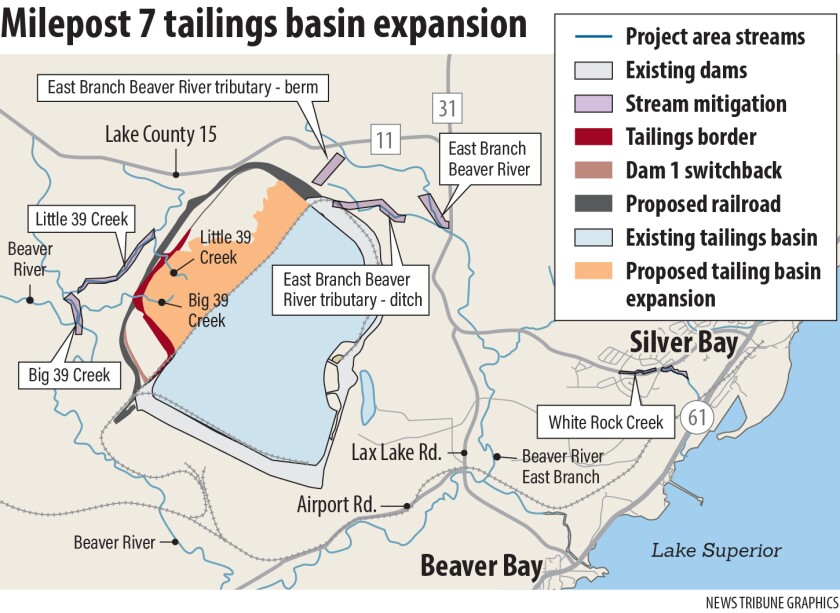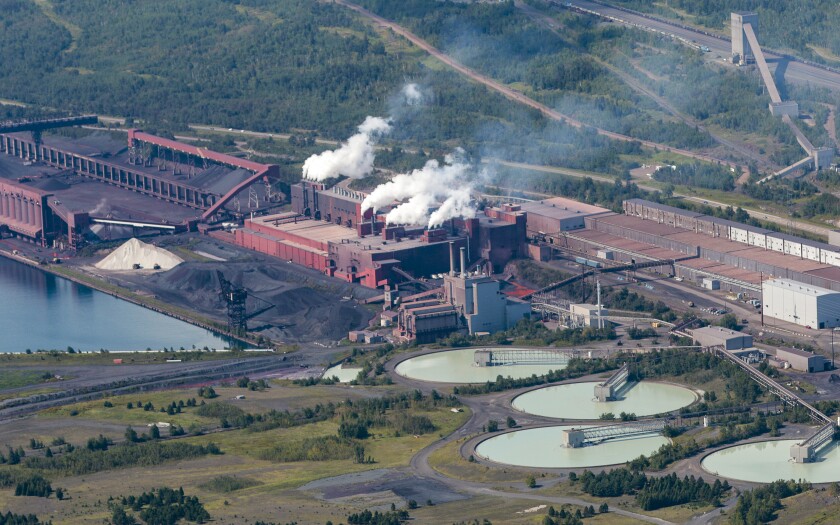SILVER BAY — Environmental groups are expected to renew their call for a more comprehensive review of dam safety ahead of the expansion of the Milepost 7 tailings basin near Lake Superior.
The Minnesota Department of Natural Resource’s environmental assessment worksheet, or EAW, released this week outlines work associated with Cleveland-Cliffs’ 650-acre expansion of Northshore Mining’s tailings basin, including the relocation of a railroad, extension of two dams, construction of a switchback and the development of a “clay borrow site.”
ADVERTISEMENT

Most notably, it said the tailings basin expansion will cover the “remnants” of Big 39 and Little 39 creeks, tributaries of the Beaver River, requiring the mining company to rehab almost four miles of nearby streams at six different sites. That triggered a mandatory EAW, the DNR said.
But it doesn’t dive deep into the issues of dam safety, and environmental groups hope the public comment period, which lasts until May 18, might change that.
“Our intention is to write a comment and say this needs to be further studied in an (environmental impact statement) and specifically the safety of the dam raises should be studied and we should do a dam break study,” Joy Anderson, a supervising attorney for the Minnesota Center for Environmental Advocacy, said in an interview with the News Tribune.
Northshore mines iron ore from its Peter Mitchell Mine near Babbitt, and then processes the material into pellets at its Silver Bay facility and sends the tailings — the fine pieces of waste rock left over after taconite is crushed and stripped of iron ore — to Milepost 7.
The famed basin was completed in 1980 after then-owner Reserve Mining was forced to stop its decadeslong practice of dumping tailings directly into Lake Superior and years of court battles over the tailings' pollution and asbestos-like fibers found in the drinking water of Duluth.
The DNR has previously said the tailings basin expansion project itself did not require an environmental review because it was within the maximum size considered in the 1975-1976 EIS the agency prepared with the Minnesota Pollution Control Agency. Cliffs is planning to build up to the maximum allowed in that permit: an area of 2,800 acres and dam wall heights of up to 1,315 feet above sea level — about 60-75 feet above the current dam elevation.

“The proposal for Milepost 7 would not expand the basin from what has been previously reviewed and permitted,” the agency reiterated in a statement to the News Tribune last month. “DNR has extensively documented this fact in the Record of Decision responding to the petitions submitted on Milepost 7.”
ADVERTISEMENT
Similarly, because Milepost 7’s master permit was granted in 1977 — two years before the state’s dam safety program became law — it doesn’t need a dam safety permit.
As the News Tribune has previously reported, Cliffs plans to build up the dam using an upstream construction method, which has come under scrutiny after dams using that method have failed, causing pollution and killing hundreds.
Anderson believes the dam construction methods should get a fresh look, instead of relying on a nearly 50-year-old study.

“DNR has basically said, ‘This is grandfathered in, we don’t need to do a dam safety permit,’ which we (MCEA) don’t think is great,” Anderson said. “If other dams need to have a dam safety permit, the fact that this is a really old dam doesn’t fill me with confidence that it’s so safe that you don’t need a dam safety permit.”
Cliffs did not respond to the News Tribune’s request for comment on the EAW and when it anticipates the expansion project and related work will begin.
The EAW said the stream mitigation projects would be completed over the next five years.
To comment on the EAW
According to the DNR: “Comments on the EAW must be submitted no later than 4:30 p.m. on Thursday, May 18. Mailed comments should be sent to the attention of Bill Johnson, EAW Project Manager, DNR Ecological and Water Resources Division, Box 25, 500 Lafayette Road, St. Paul, MN 55155-4025. Electronic or email comments may be sent to environmentalrev.dnr@state.mn.us with 'Mile Post 7 Stream EAW' in the subject line."









